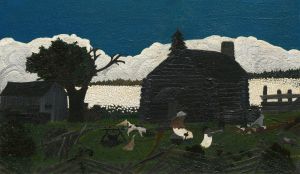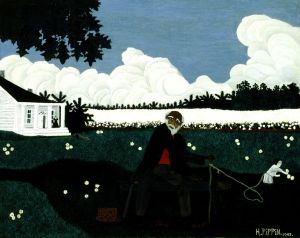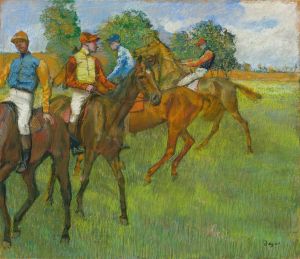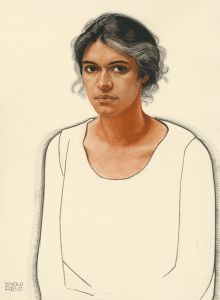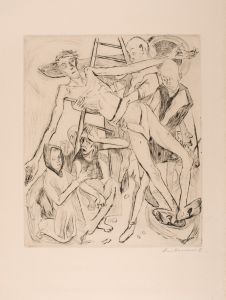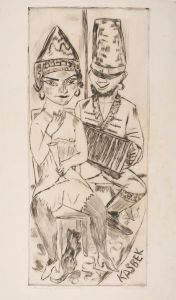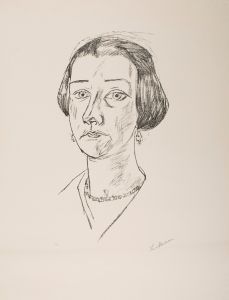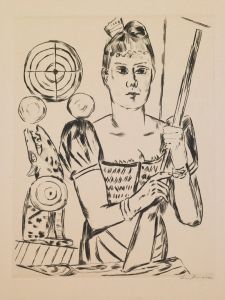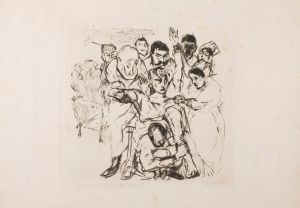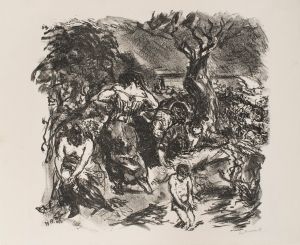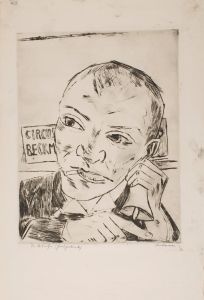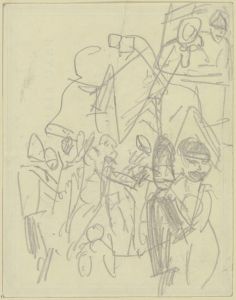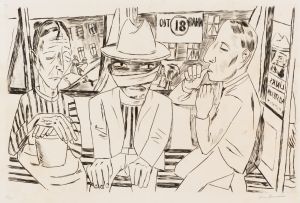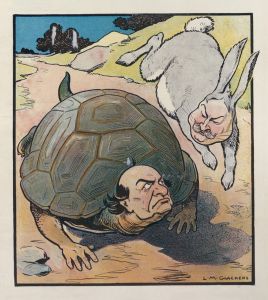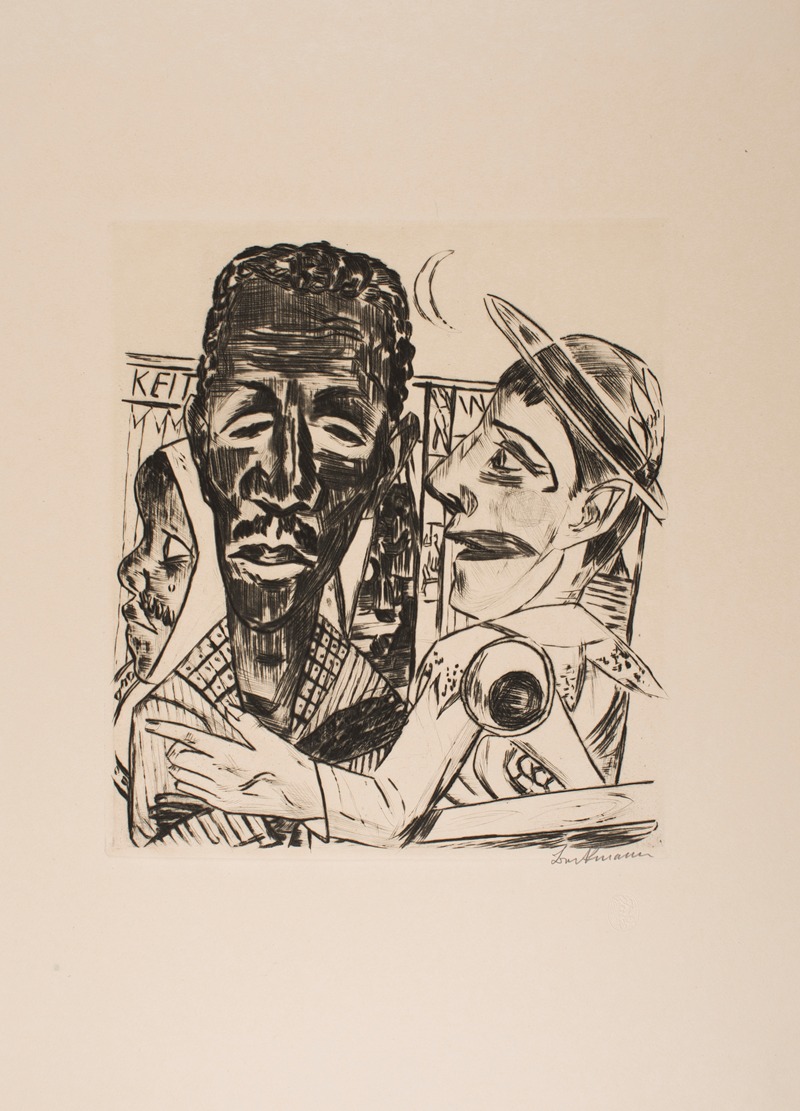
The Negro, plate 6 from the portfolio ‘Annual Fair’
A hand-painted replica of Max Beckmann’s masterpiece The Negro, plate 6 from the portfolio ‘Annual Fair’, meticulously crafted by professional artists to capture the true essence of the original. Each piece is created with museum-quality canvas and rare mineral pigments, carefully painted by experienced artists with delicate brushstrokes and rich, layered colors to perfectly recreate the texture of the original artwork. Unlike machine-printed reproductions, this hand-painted version brings the painting to life, infused with the artist’s emotions and skill in every stroke. Whether for personal collection or home decoration, it instantly elevates the artistic atmosphere of any space.
Max Beckmann was a German painter, draftsman, printmaker, and sculptor, widely regarded as one of the most important artists of the 20th century. He is often associated with the Expressionist movement, although he rejected the label. Beckmann's work is known for its bold forms, complex compositions, and often dark and introspective themes. One of his notable works is "The Negro," which is plate 6 from the portfolio titled "Annual Fair" (Jahrmarkt).
The "Annual Fair" portfolio, created in 1921, consists of ten lithographs. This series captures the vibrant and often chaotic atmosphere of a fairground, a subject that fascinated Beckmann. The portfolio reflects his interest in the human condition and the complexities of modern life, themes that are prevalent throughout his oeuvre. The works in this series are characterized by their dynamic compositions and the use of stark contrasts, both in terms of color and subject matter.
"The Negro" is a striking piece within this portfolio. It depicts a black man, a subject that was relatively uncommon in European art at the time. Beckmann's portrayal is both powerful and enigmatic, capturing the viewer's attention with its bold lines and dramatic contrasts. The figure is rendered with a sense of dignity and strength, standing out against the bustling backdrop of the fairground. This work, like many of Beckmann's, can be seen as a commentary on the social and cultural dynamics of the time.
Beckmann's art was deeply influenced by the tumultuous events of the early 20th century, including World War I and the political upheavals in Germany. His experiences as a medical orderly during the war had a profound impact on his worldview and artistic vision. The themes of alienation, existential struggle, and the search for identity are recurrent in his work, reflecting the broader societal anxieties of the Weimar Republic era.
In "The Negro," Beckmann's use of lithography allows for a range of tonal variations and textures, enhancing the emotional impact of the image. Lithography, a printmaking technique that involves drawing on a flat stone or metal plate with a greasy substance, was a medium that Beckmann frequently employed. It enabled him to experiment with different effects and reach a wider audience through the production of multiple copies.
The "Annual Fair" portfolio, including "The Negro," is significant not only for its artistic merit but also for its reflection of the cultural and social milieu of post-war Germany. Beckmann's work during this period is marked by a critical engagement with the world around him, and his art continues to resonate with contemporary audiences for its exploration of universal human themes.
Max Beckmann's contributions to modern art have been widely recognized, and his works are held in major collections around the world. "The Negro" remains an important piece within his body of work, exemplifying his skill as a printmaker and his ability to convey complex social narratives through art.





